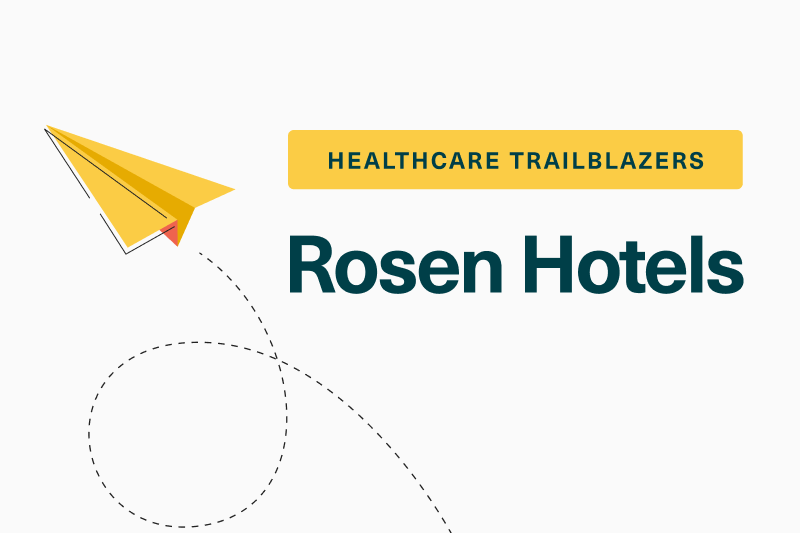Healthcare trailblazers: Rosen Hotels’ onsite primary care model

Healthcare in the U.S. is a broken industry in need of trailblazers.
The U.S. spends roughly double what comparable countries spend on healthcare — but ranks dead last among them in healthcare outcomes, equity, efficiency, and access.
With 50% of Americans getting health insurance through their employers, businesses bear the brunt of this value crisis. Now that healthcare is their second-largest expense, many businesses, large and small, are refusing to accept the exorbitant cost and poor quality of healthcare.
In this series, we highlight businesses that are challenging the status quo by embracing — and, in some cases, pioneering — modern healthcare models. These innovative approaches to healthcare provide increased value at fair prices. The result is better health outcomes and lower costs for employers and employees alike.
Case study: Rosen Hotels
Rosen Hotels & Resorts is a hospitality company that owns and operates nine hotels in Central Florida. The company’s rejection of their traditional, fully-insured group insurance in favor of a self-insured, direct-contracting model is, by now, a well-known success story.
Rosen was an early adopter of value-based care — which, broadly speaking, refers to any approach to healthcare that aims to maximize both its quality and affordability. Over 30 years ago, Rosen noticed that their ever-increasing premiums were not leading to ever-improving care. So they dropped their insurer and created RosenCare, a self-funded healthcare model that revolves around an onsite medical facility where employees can access primary care and some secondary care — in most cases, free of charge.
RosenCare employs an entire team of medical professionals who provide care to the approximately 6,000 lives covered under the system. The model places heavy emphasis on wellness, preventive care, and chronic care management, all of which reduce healthcare costs in the long run. Rosen contracts directly with local hospitals and surgical centers to fill gaps in the near-comprehensive care they are equipped to provide onsite.
Their onsite primary care model renders the company both payor and provider. By cutting out the middleman and taking control over their provider compensation model, Rosen was able to eliminate the misaligned stakeholder incentives that had been costing them — and their employees — so much money on their previous plan. And the results have been outstanding:
- RosenCare has reduced per-employee healthcare costs by about $6000 per year, bringing them down to half of the national average.
- Most Rosen employees contribute $60 per month in premiums for employee-only coverage, 60% less than the national average.
- The company has saved an estimated $400 million in healthcare costs by using the RosenCare model instead of traditional group insurance.
This seminal case study is a testament to the power of aligning payor and provider incentives to ensure high-value care, as well as the power of preventive primary care to make a lasting positive impact on both health outcomes and healthcare costs.
Of course, not all businesses have the resources to build their own onsite medical facility. But businesses of all sizes can take a cue from Rosen and move in the direction of value-based care. By switching from legacy carriers to modern insurance companies like Sana, small- and medium-sized businesses can access many of the value-based principles RosenCare was built on — such as self-funding, fair and transparent pricing, $0 healthcare options for employees, and advanced primary care — without having to do the heavy lifting themselves.






